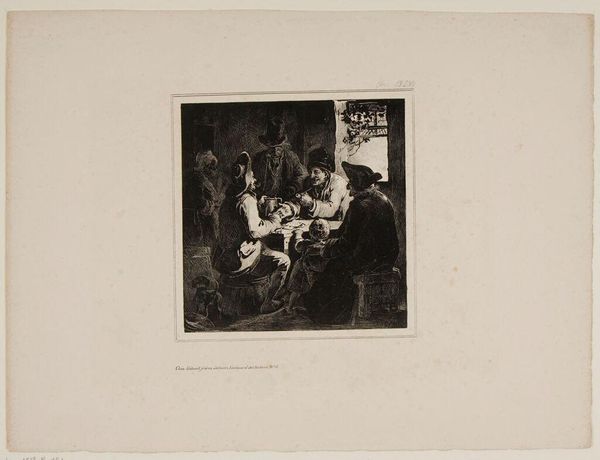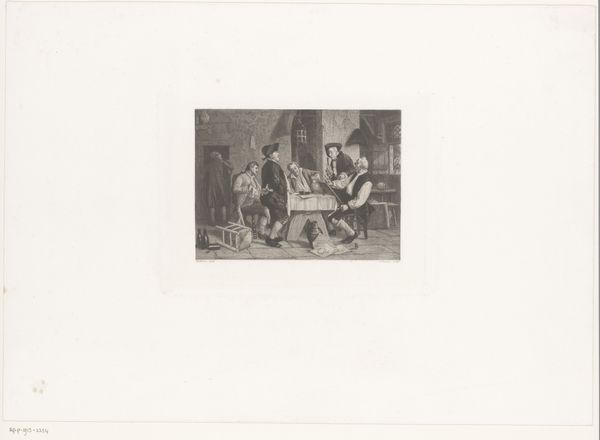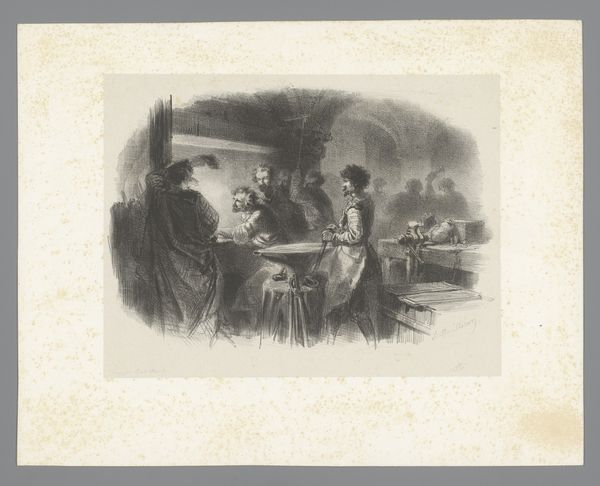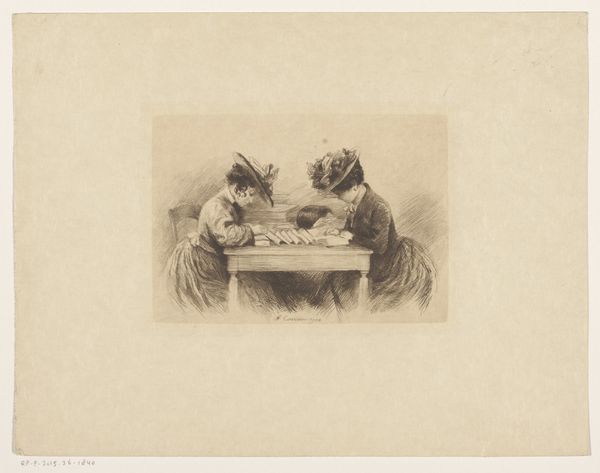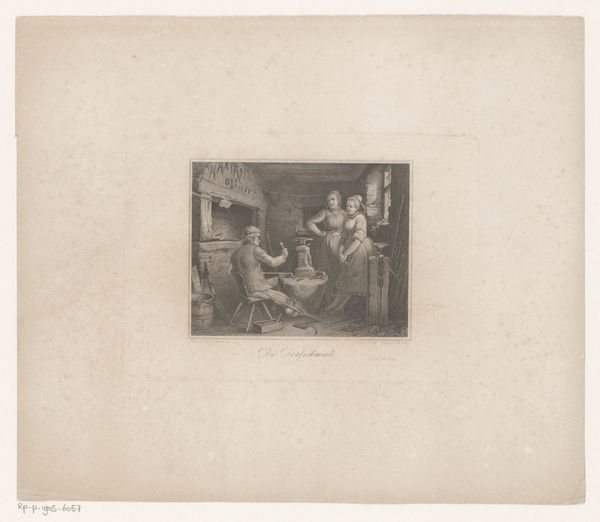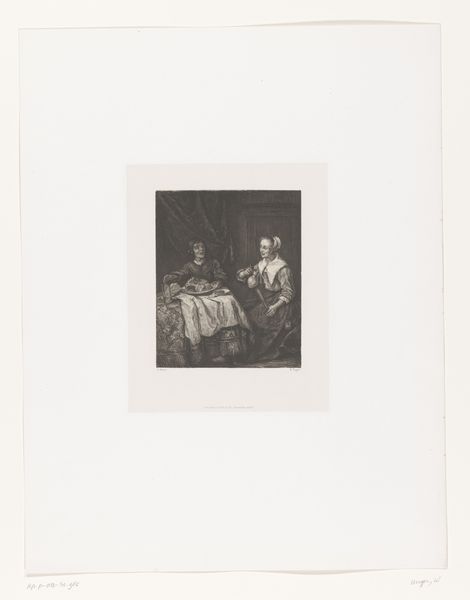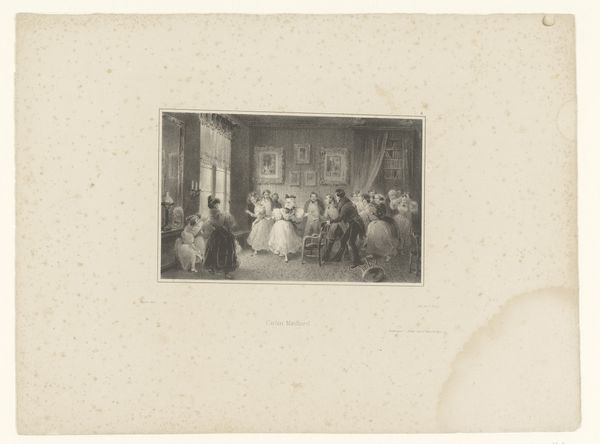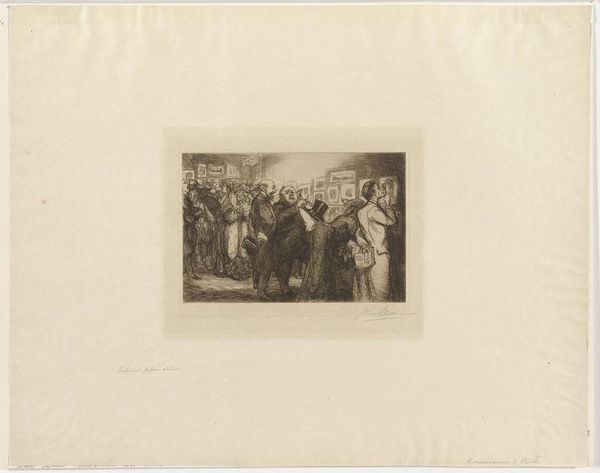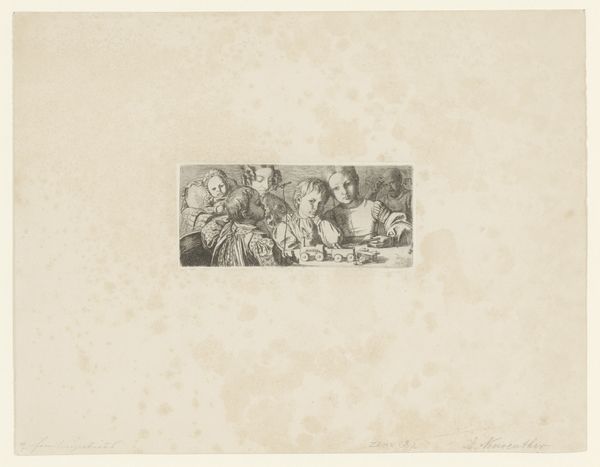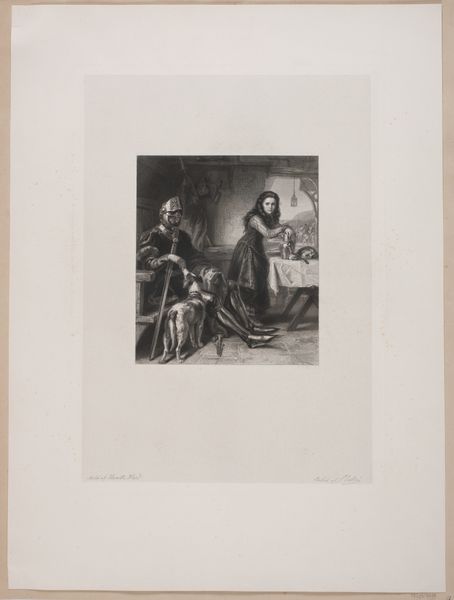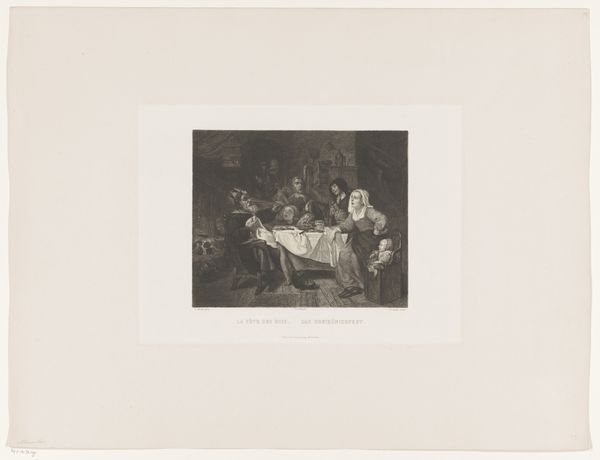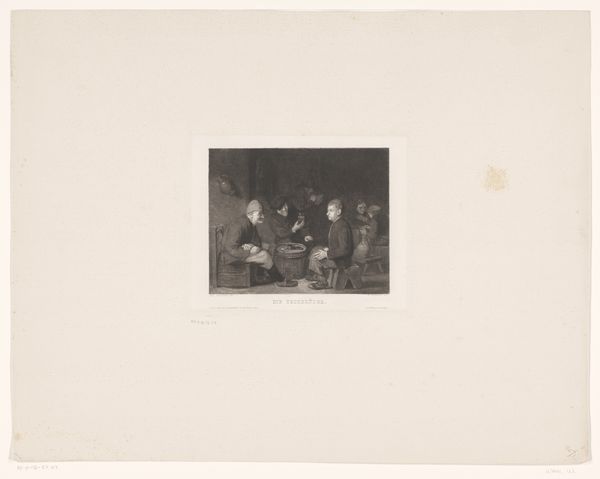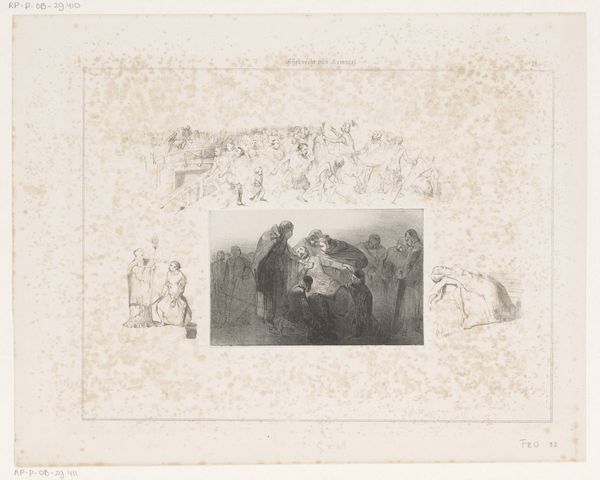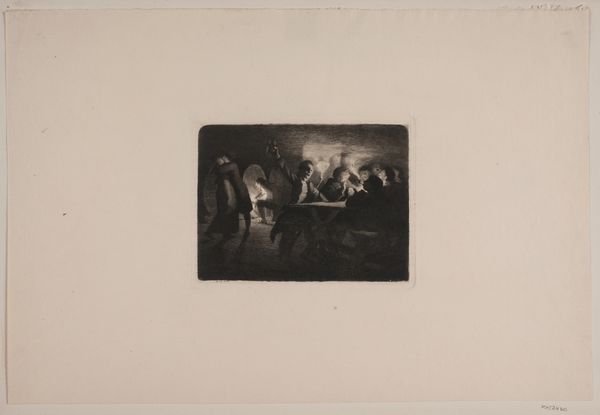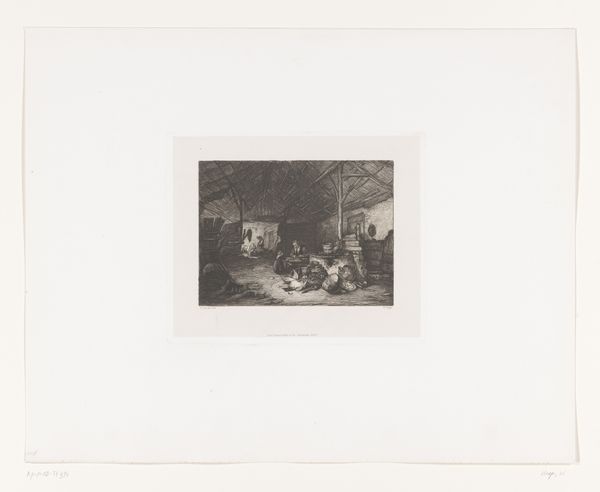
print, woodcut, wood-engraving, engraving
#
portrait
#
dutch-golden-age
# print
#
figuration
#
group-portraits
#
woodcut
#
united-states
#
genre-painting
#
history-painting
#
wood-engraving
#
engraving
Dimensions: 5 3/16 x 6 7/16 in. (13.18 x 16.35 cm) (image)9 x 11 5/8 in. (22.86 x 29.53 cm) (sheet)
Copyright: No Copyright - United States
Curator: Timothy Cole's wood engraving, "Prodigal Son Feasting," created in 1906, now hangs here at the Minneapolis Institute of Art. What strikes you about it at first glance? Editor: There's an air of studied melancholy about it, a stillness. It's interesting; I see a narrative moment captured, but drained of boisterous joy—more a stage tableau than a lively feast. Curator: Cole was working in a very specific historical moment, emulating the Dutch Golden Age masters. Think of this piece as part of the broader social commentary on wealth and morality at the turn of the century, particularly within American artistic circles grappling with rapid industrialization. It makes you wonder: what is this abundance truly masking? Editor: Immediately, the undercurrents become visible. The composition guides us: the figures arranged around the table, but with a shadow cast on the floor underneath. A visual metaphor for what lurks beneath the surface. The dog lying under the table; a traditional symbol of fidelity, perhaps forgotten. Curator: Precisely! Cole would have been aware of those symbolic associations. Also, consider the engraving process itself—laborious, precise, almost a devotional act to recreate a moment from, presumably, an original painting. Editor: And there are so many interpretations of the prodigal son, aren’t there? From personal redemption, class consciousness and moral questions around inheritance, it all contributes to an underlying sense of anxiety in the image. That cake-like thing on the table doesn't feel celebratory – rather an ostentatious display against what’s coming. Curator: Yes, and that gets to the heart of the matter. This isn’t just a rendering of a biblical scene; it’s a commentary on the social fabric, perhaps even on the artist’s own place within it. How interesting that Cole, an engraver and print maker, who was a craftsman as well as an artist, sought to render those who are being entertained. It prompts critical examination of class differences that resonate even today. Editor: Absolutely. Considering that cultural weight, I leave seeing in this artwork a carefully constructed commentary rather than a straightforward illustration. Curator: I agree, this small print has really given me much more to consider about class anxiety at the dawn of the twentieth century, particularly viewed through the lens of inherited wealth and moral decay.
Comments
No comments
Be the first to comment and join the conversation on the ultimate creative platform.
